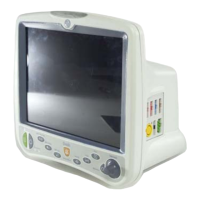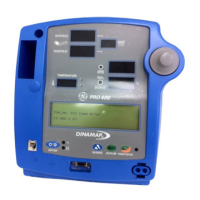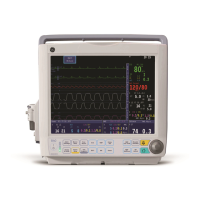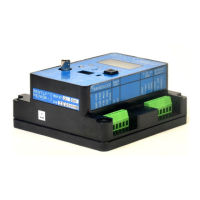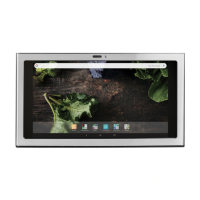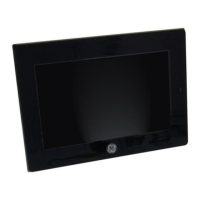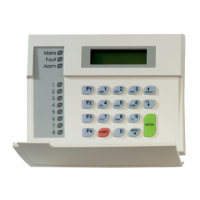Equipment overview: Theory of operation
2000966-542D Dash 3000/4000/5000 2-41
Defib Sync
The Defib Sync port provides signals needed to perform synchronized
cardioversion with a defibrillator. The Marker Out signal is a pulse with
selectable amplitude and width that coincides with the patient’s ECG R-
wave. The Marker In signal is returned to the patient monitor by the
defibrillator. The Marker In signal causes the patient monitor to insert a
defib marker in the displayed ECG waveform.
This port also provides two analog signals: ECG and invasive pressure.
The patient monitor provides the top displayed ECG signal with
reconstructed pace pulses. You can use this signal to trigger a
defibrillator or intra-aortic balloon pump. BP1 produces the pressure
signal and is intended for triggering an intra-aortic balloon pump.
Peripheral expansion
Asynchronous communication, Ethernet (shared with the Ethernet RJ-
45 port), 9-18 V power, 5 V power, and discrete I/O signals are provided
in the peripheral expansion interface ports. The expansion port pairs
with the AC mains power inlet to supply power to the patient monitor
through a peripheral device.
Wireless LAN
Initialization
Initialization begins on a card insertion function call from card services.
The card insertion function checks the manufacturer and card ID.
Initialization includes:
Access Configuration Register - Set through card services to the
manufacturer's recommended value.
The MAC Address is set to the Dash's MAC address to provide
seamless transition from hardwire to wireless and back.
SSID - Set to stored value. This ID must be the same between a card
and an access point for them to associate.
Reception
The read task waits on a receive interrupt from the card. When
awakened, the packet length is validated and the packet is copied into an
ethernet buffer. A transfer function using byte-sized transfers is used to
ensure the access time to the card is minimized. The packet length and
pointer is returned to the ethernet stream.

